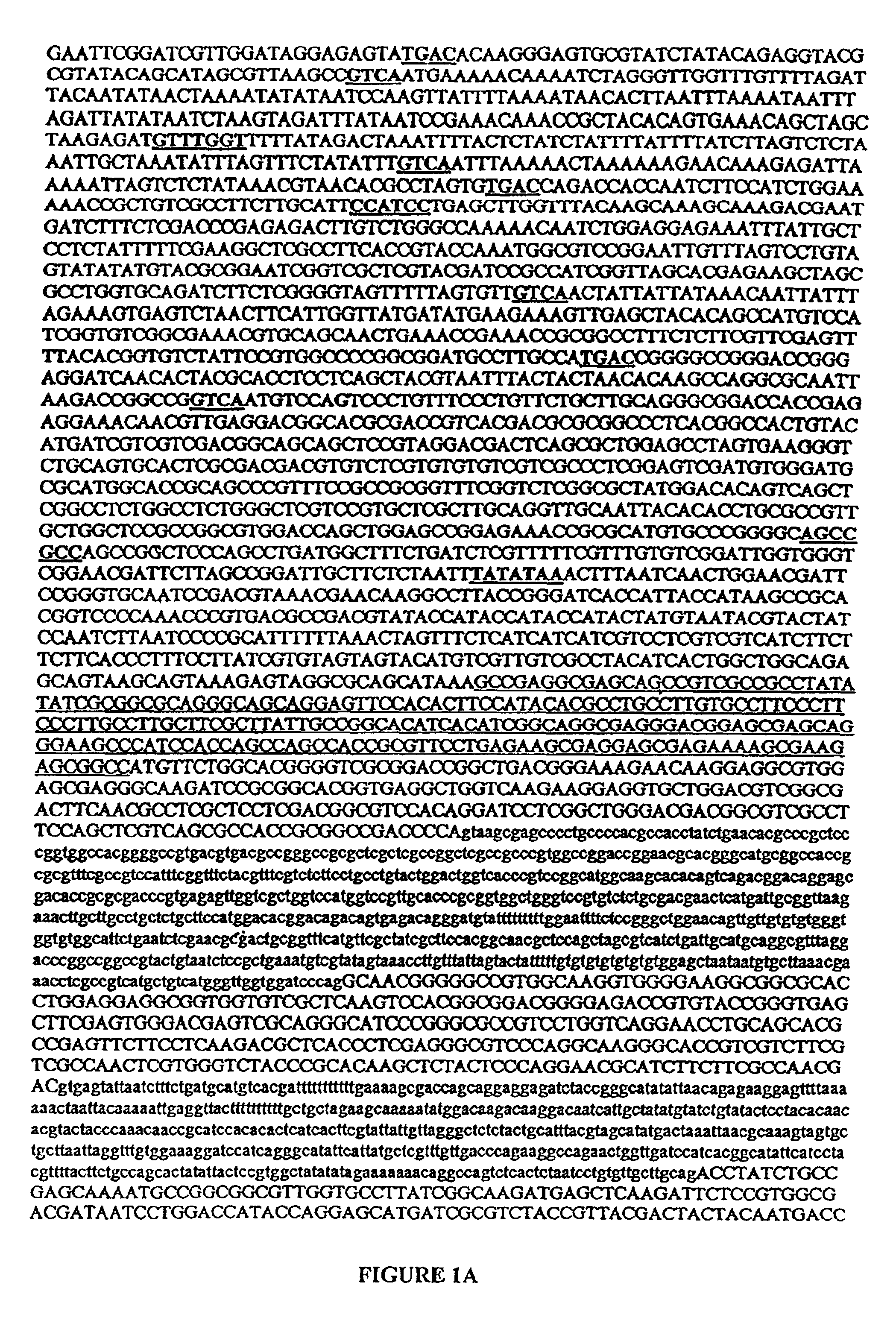Lipoxygenase polynucleotides and methods of use
a technology of lipoxygenase and polynucleotide, which is applied in the field of gene activity and development in plants, can solve the problems of high liver cancer rate, and high toxicity of mycotoxin, and achieve the effect of enhancing resistance to plant pathogens and promoting healing of damaged tissues
- Summary
- Abstract
- Description
- Claims
- Application Information
AI Technical Summary
Problems solved by technology
Method used
Image
Examples
example 1
Transformation and Regeneration of Maize Transgenic Plants
[0160]Immature maize embryos from greenhouse donor plants are bombarded with a plasmid containing a LOX nucleotide sequence of the invention operably linked to a ubiquitin promoter and the selectable marker gene PAT (Wohlleben et al. (1988) Gene 70:25-37), which confers resistance to the herbicide Bialaphos. Alternatively, the selectable marker gene is provided on a separate plasmid. Transformation is performed as follows. Media recipes follow below.
Preparation of Target Tissue
[0161]The ears are husked and surface sterilized in 30% Clorox bleach plus 0.5% Micro detergent for 20 minutes, and rinsed two times with sterile water. The immature embryos are excised and placed embryo axis side down (scutellum side up), 25 embryos per plate, on 560Y medium for 4 hours and then aligned within the 2.5-cm target zone in preparation for bombardment.
Preparation of DNA
[0162]A plasmid vector comprising a LOX nucleotide sequence of the inven...
example 2
Transformation and Regeneration of Maize Transgenic Plants with an Expression Cassette Comprising a Homologous Promoter and LOX Nucleotide Sequence
[0172]Immature maize embryos from greenhouse donor plants are bombarded with a plasmid containing a nucleotide sequence of interest operably linked to the Zea mays LOX5 transcriptional initiation region (e.g., promoter region) set forth in SEQ ID NO:54 and the selectable marker gene PAT (Wohlleben et al. (1988) Gene 70:25-37), which confers resistance to the herbicide Bialaphos. Alternatively, the selectable marker gene is provided on a separate plasmid. Transformation is performed as follows. Media recipes follow below.
Preparation of Target Tissue
[0173]The ears are husked and surface sterilized in 30% Clorox bleach plus 0.5% Micro detergent for 20 minutes, and rinsed two times with sterile water. The immature embryos are excised and placed embryo axis side down (scutellum side up), 25 embryos per plate, on 560Y medium for 4 hours and the...
example 3
Azrobacterium-Mediated Transformation
[0184]For Agrobacterium-mediated transformation of maize with LOX nucleotide sequences of the invention the method of Zhao is employed (U.S. Pat. No. 5,981,840, and PCT patent publication WO98 / 32326; the contents of which are hereby incorporated by reference). Briefly, immature embryos are isolated from maize and the embryos contacted with a suspension of Agrobacterium, where the bacteria are capable of transferring the DNA constructs of interest to at least one cell of at least one of the immature embryos (step 1: the infection step). In this step the immature embryos are preferably immersed in an Agrobacterium suspension for the initiation of inoculation. The embryos are co-cultured for a time with the Agrobacterium (step 2: the co-cultivation step). Preferably the immature embryos are cultured on solid medium following the infection step. Following this co-cultivation period an optional “resting” step is contemplated. In this resting step, the...
PUM
| Property | Measurement | Unit |
|---|---|---|
| temperature | aaaaa | aaaaa |
| temperature | aaaaa | aaaaa |
| pH | aaaaa | aaaaa |
Abstract
Description
Claims
Application Information
 Login to view more
Login to view more - R&D Engineer
- R&D Manager
- IP Professional
- Industry Leading Data Capabilities
- Powerful AI technology
- Patent DNA Extraction
Browse by: Latest US Patents, China's latest patents, Technical Efficacy Thesaurus, Application Domain, Technology Topic.
© 2024 PatSnap. All rights reserved.Legal|Privacy policy|Modern Slavery Act Transparency Statement|Sitemap


